The space rock poses no threat to our planet, despite being on a path to zoom between Earth and the moon.


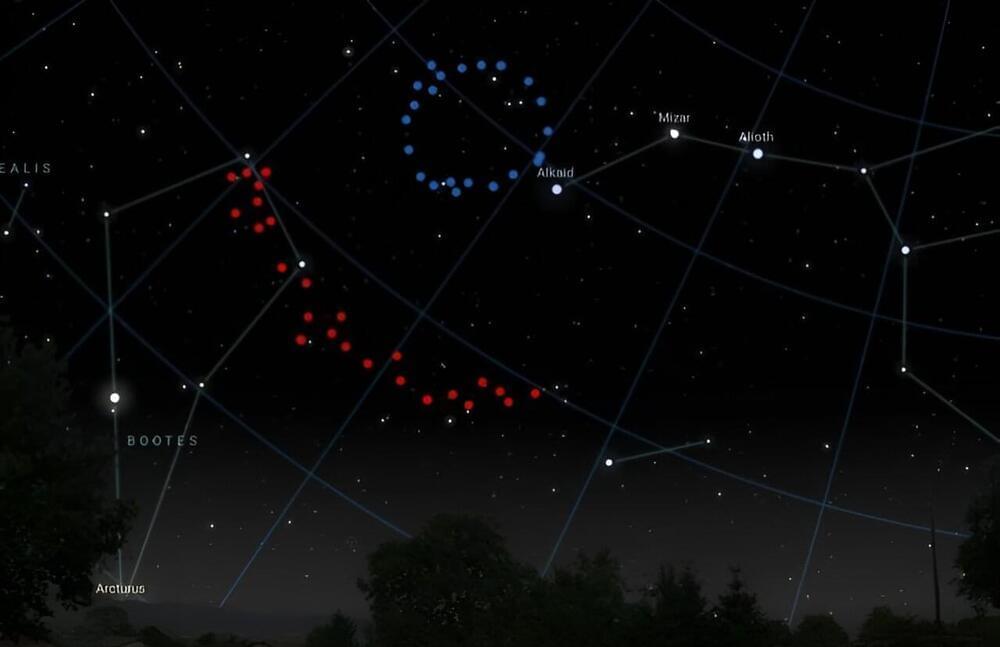
The Big Ring in the Sky is 9.2 billion light-years from Earth. It has a diameter of about 1.3 billion light-years, and a circumference of about 4 billion light-years. If we could step outside and see it directly, the diameter of the Big Ring would need about 15 full moons to cover it.
It is the second ultra-large structure discovered by University of Central Lancashire (UCLan) Ph.D. student Alexia Lopez who, two years ago, also discovered the Giant Arc in the Sky. Remarkably, the Big Ring and the Giant Arc, which is 3.3 billion light-years across, are in the same cosmological neighborhood—they are seen at the same distance, at the same cosmic time, and are only 12 degrees apart in the sky.
Alexia said, Neither of these two ultra-large structures is easy to explain in our current understanding of the universe. And their ultra-large sizes, distinctive shapes, and cosmological proximity must surely be telling us something important—but what exactly?

The Little Helicopter That Could, also known as NASA’s Ingenuity Mars Helicopter, has unfortunately ended its mission of exploring the surface of Mars after a historic 72 flights since its first flight in April 2021. The decision to end the mission came after teams discovered that at least one rotor blade was damaged enough to where it could no longer perform aerial duties. Despite this, Ingenuity remains standing upright and communicating with Earth continues, as well.
“The historic journey of Ingenuity, the first aircraft on another planet, has come to end,” NASA Administrator Bill Nelson said in a statement. “That remarkable helicopter flew higher and farther than we ever imagined and helped NASA do what we do best – make the impossible, possible. Through missions like Ingenuity, NASA is paving the way for future flight in our solar system and smarter, safer human exploration to Mars and beyond.”
Launched onboard NASA’s Perseverance rover on July 30, 2020, and landing in Jezero Crater on Mars on February 18, 2021, Ingenuity became the first aircraft to perform a powered flight on another world on April 19, 2021. Ingenuity was originally built for a 30-day mission where it would conduct five experimental flights to demonstrate that powered flight could be achieved on another planetary body other than Earth. With a total of 72 flights under its belt, Ingenuity has far exceeded expectations in terms of its original goals and objectives. This includes a horizontal flight distance of 2,315 feet (705 meters), which was accomplished just last month on December 20, 2023.
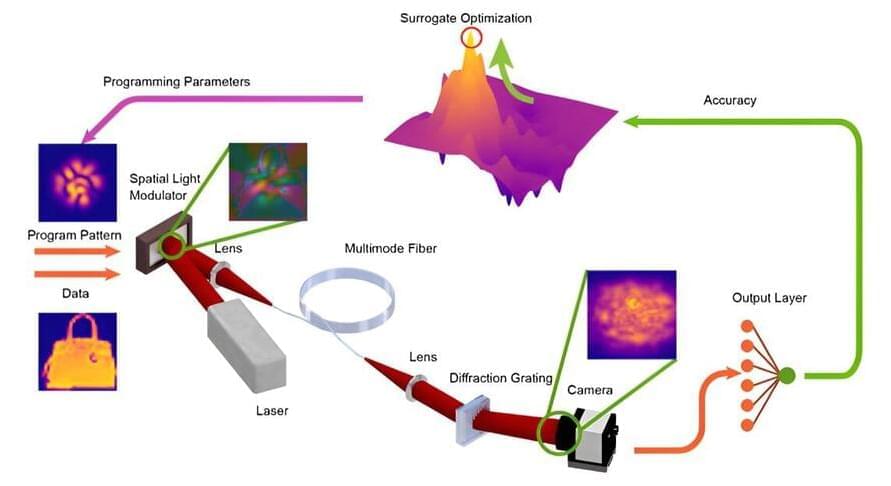
Current artificial intelligence models utilize billions of trainable parameters to achieve challenging tasks. However, this large number of parameters comes with a hefty cost. Training and deploying these huge models require immense memory space and computing capability that can only be provided by hangar-sized data centers in processes that consume energy equivalent to the electricity needs of midsized cities.
The research community is presently making efforts to rethink both the related computing hardware and the machine learning algorithms to sustainably keep the development of artificial intelligence at its current pace. Optical implementation of neural network architectures is a promising avenue because of the low power implementation of the connections between the units.
New research reported in Advanced Photonics combines light propagation inside multimode fibers with a small number of digitally programmable parameters and achieves the same performance on image classification tasks with fully digital systems with more than 100 times more programmable parameters. This computational framework streamlines the memory requirement and reduces the need for energy-intensive digital processes, while achieving the same level of accuracy in a variety of machine learning tasks.
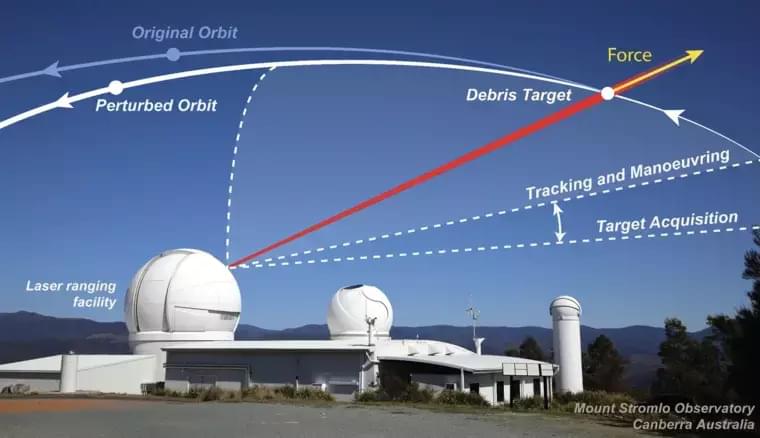
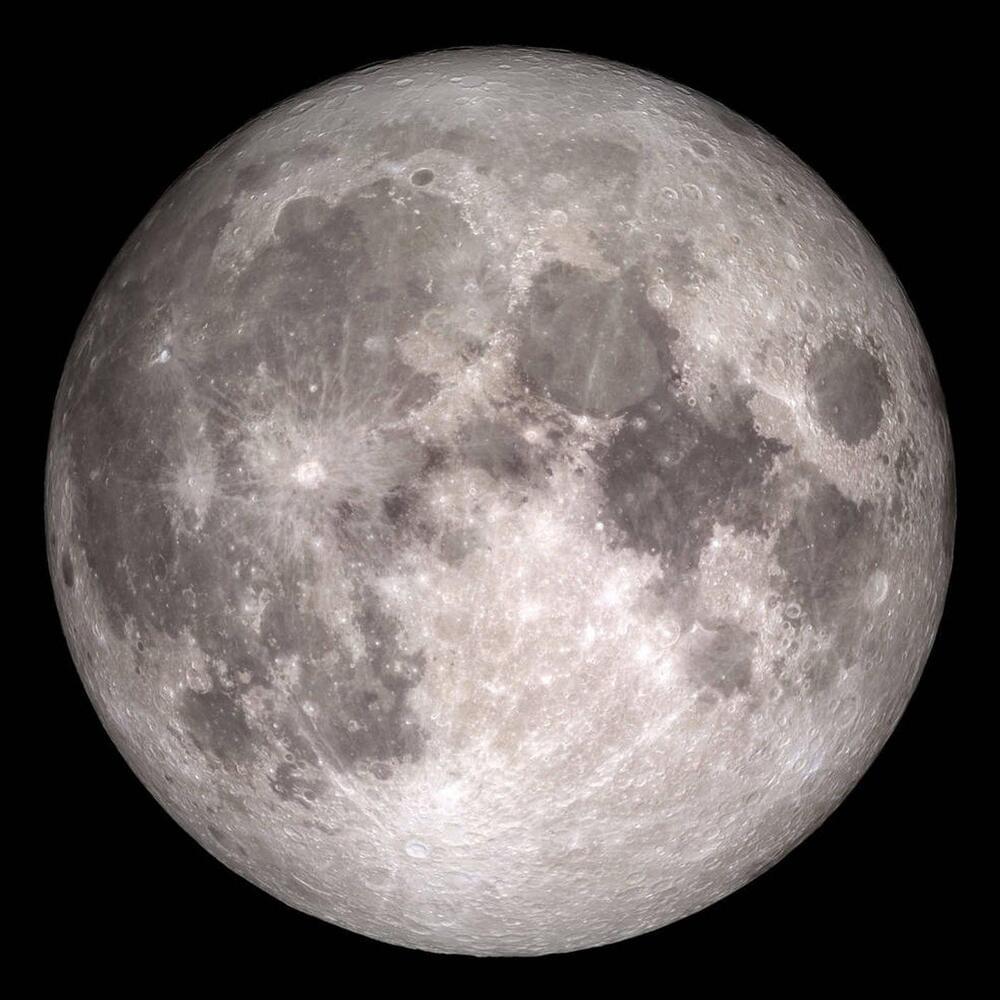
“Our modeling suggests that shallow moonquakes capable of producing strong ground shaking in the south polar region are possible from slip events on existing faults or the formation of new thrust faults,” said Dr. Thomas R. Watters.
Objects expand and contract from heating and cooling, and planetary objects are no different, which includes our nearest celestial neighbor, our Moon. Billions of years ago, the Moon was very volcanically active which caused it to expand from all the internal heat driving the volcanic activity. However, as this internal heat died down, the Moon began to cool, and has been contracting, or shrinking, ever since. Now, a recent study published in The Planetary Science Journal discusses how this shrinkage could be responsible for the lunar south pole becoming warped, leading to landslides and moonquakes, which increases safety risks for future astronauts, specifically with NASA’s Artemis program.
For the study, the researchers developed models of how seismic waves from moonquakes could cause powerful ground shaking and landslides near the lunar south pole, which is home to de Gerlache scarp, with a scarp being a geologic feature formed from the Moon contracting. Data from the Apollo Passive Seismic Network, which were a series of seismometers left on the lunar surface during Apollo 11, 12, 14, 15, and 16 and functioned between 1969 and 1977, indicates that de Gerlache scarp could have formed from an approximate magnitude-5.3 moonquake. The reason de Gerlache scarp is a crucial location is due to its proximity to one of the potential landing sites for the Artemis III mission, which is slated to be the first human landing of the Artemis program.
In the end, the researchers determined that strong to moderate ground shaking from a magnitude-5.3 moonquake could be felt as far as approximately 40 km (25 mi) from the epicenter with moderate to light ground shaking could be felt from approximately 50 km (31 mi) from the epicenter. Additionally, the researchers determined that such an event could cause lunar regolith landslides, noting that Shackleton Crater is particularly susceptible to such landslides.
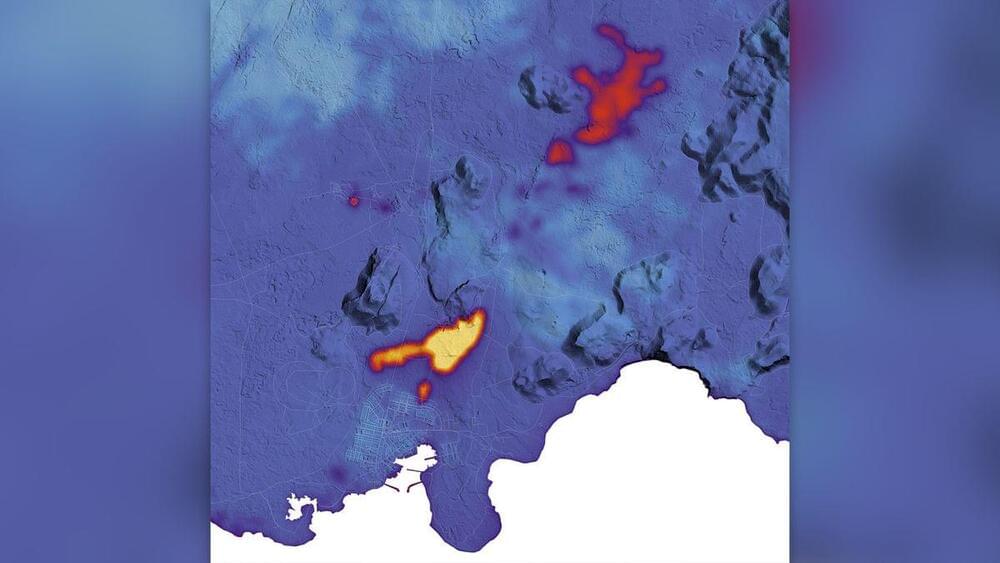
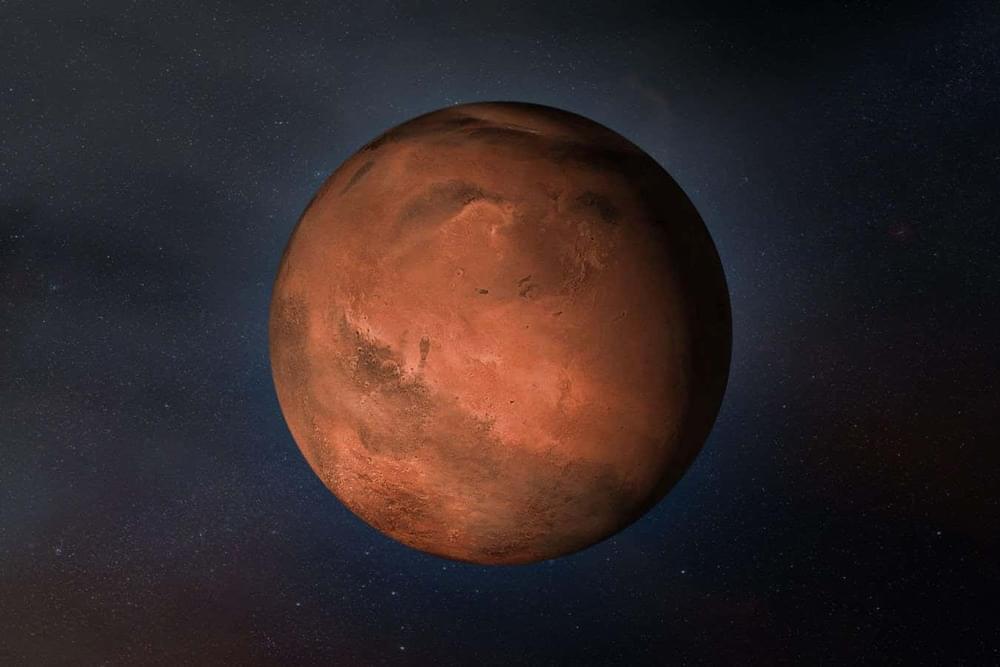
Seems like there was water on Mars, for those that subscribe or want to, you can read the whole article.
A large formation near the equator of Mars is now thought to be made of water ice, which could indicate that the Martian climate went through huge temperature swings in the past.
By Leah Crane
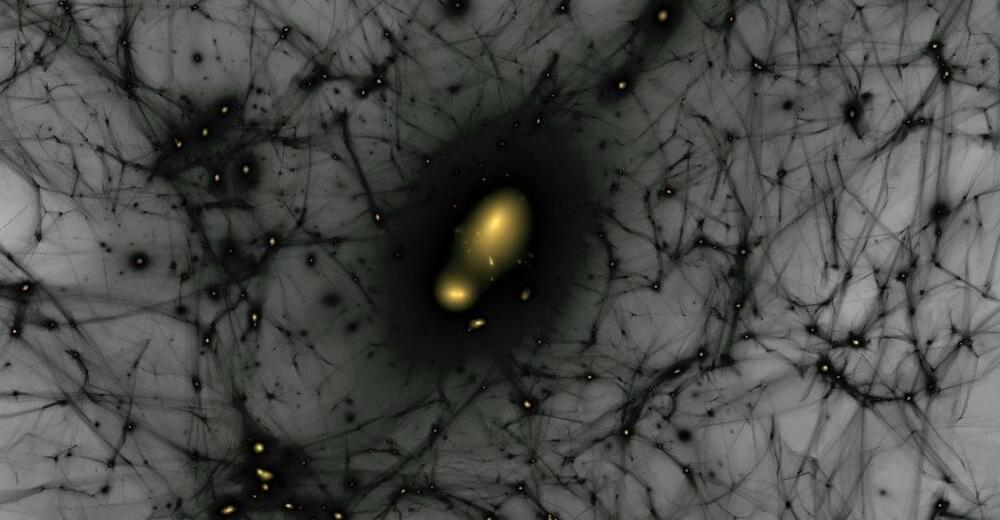
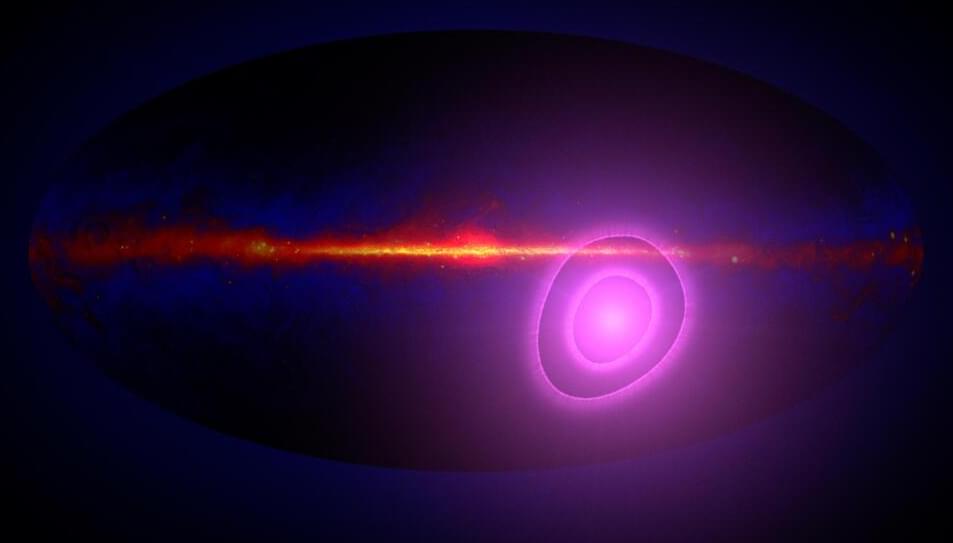
Astronomers analyzing 13 years of data from NASA’s Fermi Gamma-ray Space Telescope have found an unexpected and as yet unexplained feature outside of our galaxy.
“It is a completely serendipitous discovery,” said Alexander Kashlinsky, a cosmologist at the University of Maryland and NASA’s Goddard Space Flight Center in Greenbelt, who presented the research at the 243rd meeting of the American Astronomical Society in New Orleans. “We found a much stronger signal, and in a different part of the sky, than the one we were looking for.”
Intriguingly, the gamma-ray signal is found in a similar direction and with a nearly identical magnitude as another unexplained feature, one produced by some of the most energetic cosmic particles ever detected.